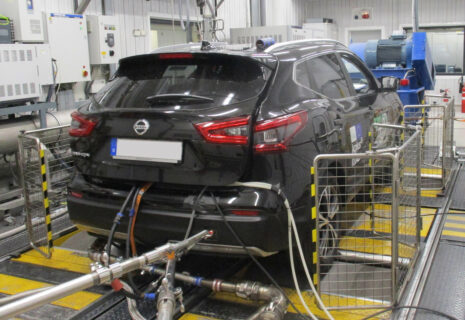Nissan Qashqai 1.3 DIGT petrol 4x2 manual
2020
50%
6.1
10
Clean Air Index
4.5
10
Energy Efficiency Index
4.1
10
Greenhouse Gas Index
| Laboratory Tests | NMHC | NOX | NH3 | CO | PN | |
|---|---|---|---|---|---|---|
| 5.610 | Cold Test | |||||
| 7.710 | Warm Test | |||||
| 0.710 | Cold Ambient test | |||||
| 7.110 | Highway | |||||
| Road test | ||||||
| 6.810 | On-Road Drive | |||||
| 5.28 | On-Road Heavy Load | |||||
| 3.85 | On-Road Light Load | |||||
| 4.35 | On-Road Short Trip | |||||
| 2.02 | Congestion | |||||
| Robustness |
| Laboratory Tests | Energy | |||
|---|---|---|---|---|
| 4.910 | Cold Test | |||
| 5.310 | Warm Test | |||
| 4.210 | Cold Ambient test | |||
| 3.810 | Highway | |||
| Consumption | Driving Range | |||
| Average | 7.2l100 km | 770km | ||
| Worst-Case | 7.8l100 km | 705km | ||
| Greenhouse Gases | CO2 | N2O | CH4 | |
|---|---|---|---|---|
| 3.07 | Cold Test | |||
| 3.27 | Warm Test | |||
| 2.87 | Cold Ambient test | |||
| 2.67 | Highway |
Specifications
- Tested Car SJNFFAJ11U264XXXX
- Publication Date 11 2020
- Vehicle Class Large SUV
- Emissions Class Euro 6d-Temp
- Tyres 215/55 R18
- Mass 1,340 kg
- Engine Size 1,332 cc
- Engine Power/Torque 103 kW/240 Nm
- Published CO2 160 g/km




































































































































Our verdict
The Qashqai was launched in 2006 and is now in its second generation, with a third expected soon. The car tested here is powered by Nissan's 103 kW 1.3 DIGT (direct-injection gasoline turbo) petrol engine. The car was tested with settings appropriate for the tyres fitted to the car until the end of 2019. Since the start of 2020, more energy efficient tyres, with lower rolling resistance, have been standard equipment and it is likely that the car may have scored better in the Energy Efficiency Index if tested with these tyres. Nevertheless, the car performed well overall. Good control of pollutant emissions, let down only by its performance in the cold ambient temperature test, gives an impressive index of 6.1 in the Clean Air assessment. Together with reasonable control of greenhouse gases, the car emerges with 2½ stars and is unlucky to miss out a 3 star rating.